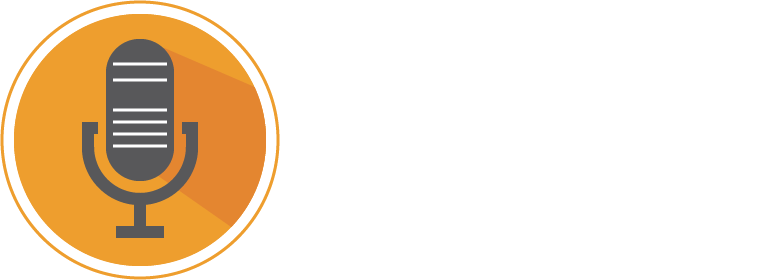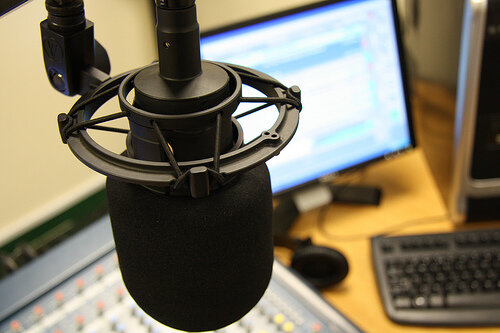Make a Deeper Connection with Attendees at Your Next Life Science Event
I have a confession to make.
When I was a MarCom manager, I cringed every time I thought about the fraction of my budget that was spent on events. I had to see for myself where it all went, so my boss agreed I should go to ASMS.
While I was there, I observed the activity in our hospitality booth that was apparently feeding every chemistry graduate student in the midwest. Then our event manager told me the price of a single chicken finger.
“Are you freakin’ kiddin’ me?” I could do so many other things with that money. I just didn’t get it.
I didn’t understand what events were all about.
Connection. Sure, there is marketing and selling and free food, but what matters, the reason we do events at all, is a face to face connection.
It’s the kind of connection no amount of digital personalization, automation, or geo-location can provide.
I’ve been to a few events since then and I’m a little wiser (10 years later). I work mostly at home alone. The best part of my job? When I’m talking to someone on my podcast. Why?
Learning and connection. I love the stories. It’s not quite face to face, but it’s my water cooler and I’ve made a lot of friends hanging out there.
The time is ripe to combine those digital stories with face to face events to create more connection for the attendees and make every event more successful.
I’m not the first to say it, but we are in a new Golden Age of Audio (Alex Blumberg said it).
How can audio create more engagement with attendees before, during, and after your event?
Consider recording interviews with thought leaders and speakers. Video is often the natural choice for these recordings, but depending on your goals, audio may still be the right choice, even if you have budget for video.
Below are a few advantages of audio over video. If you decide you must record video, I’ll point out where a hybrid approach can make your event even better.
Not everyone is comfortable in front of a camera. Even the folks who are comfortable speaking in front of a large audience may not be as smooth in front of a camera. They may be stiff, self conscious, or downright dull. An engaging video interview requires at least two camera angles for a wide shot and a zoom, otherwise the straight head shot or two-up gets monotonous. That adds to the complexity of the setup.
No lighting requirements. While we’re talking about set-up, an audio interview doesn’t require any special lighting. Getting this right for video can take time with the result that each interview takes a little longer. That time could be spent on more interviews or going deeper on a topic.
Editing audio is typically easier than video. An audio interview may need little or no editing at all. Any edits you do make are invisible.
Easier editing means a faster turnaround time so you can publish the interviews sooner, even on the same day, making them more relevant to your audience.
PRO TIP: If you are going with video recording, you can pull the audio track out separately and edit that for a fast turnaround while you continue with video post production.
Both audio and video content can be repurposed later (based on transcripts, for example) as evergreen content that supports your long-term mission.
Below, I’ve listed 10 ways that audio content can enhance the ROI of your Life Science Event.
Benefits to organizers
Audio content can be produced in advance of, during or after an event. Interviews in advance of an event can be produced remotely and the content used to get attendees excited about the agenda.
Daily bonus content for attendees. For example, interviews with thought leaders and other speakers can explore the backstory or inspiration and provide a closer connection for those that didn’t get to attend a session or meet a particular speaker in person. Those interviews can also be used to attract earned media coverage of your event.
You’ll create loyalty by helping your KOLs build their brand alongside of yours. Speakers benefit from an opportunity to reach and connect with a larger audience.
Interviews with keynote speakers and other presenters become source materials for more in-depth articles like this one that came out of an interview I did with Andy Bertera of New England Biolabs. Consider combining material from several interviews into future blog posts or newsletter items that help support your overall mission and grow your list.
As you continue to produce insightful interviews with speakers at multiple events, you’ll build a substantial content library over time. This will help grow your membership while building a network of advocates who want to share the stories with their own audience and can introduce you to new potential speakers.
Marketing materials for future events. Consider asking attendees about what was valuable to them. Here’s how to make this easy. Set up the recording station in a highly visible area. People are sure to come by and ask “Watcha doin’?” This in itself creates engagement and conversation. Invite them to sit down for a chat about their favorite topics. Don’t forget to ask about their overall experience.
The exclusive audio content you create can be targeted advertising space for your vendors. Let them sponsor the audio program and insert 15- or 30-second mid-roll messages. You might even offer them a few slots of recording time to interview their own KOLs while you have the setup in place.
Benefits to attendees
What can audio stories do for your audience?
Are you trying to build a community? Stir up new ideas? Help people grow and move forward? Let’s see how audio stories can help you do that before, during and after your event.
Access to more content. At a large multi-track event, people often have to choose between sessions. Maybe they don’t need each session at the same level of detail. An overview of the key points may be sufficient for some. Or maybe they want to go deeper into the backstory or some related topic. These are all ripe opportunities for supplemental stories and interviews.
Convenience. Attendees may listen to previews of presentations while they enjoy coffee in the morning before the event. Or listen to summaries on the flight home. Audio stories are portable and can be available on demand.
A differentiated experience. Between the increased engagement, the content and the sheer novelty of this approach, your booth or event will stand out in a relevant way.
Bonus: Listening time is special. Audio content is typically consumed while doing something that isn’t compatible with watching a video. At the same time, they are less likely to be interrupted. Exercising, walking the dog, mowing the lawn.
The best part is this: Listeners can really think about what they are hearing, digest it and come up with new ideas. And isn’t that why you are having a conference? The connections you provide, along with your content, help attendees grow and move forward.
Want to discuss how this can make your event more successful?

